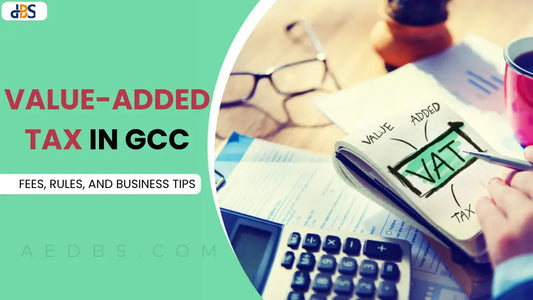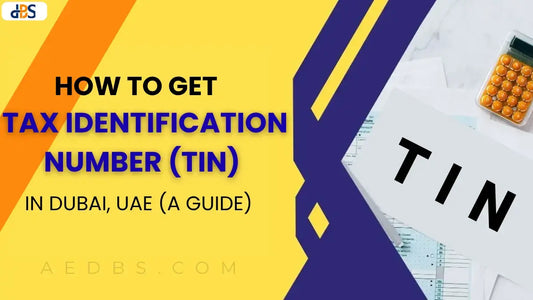Easily File Your VAT Return in the UAE with DBS
If your business is registered for VAT in UAE, then you have to file your VAT return on time. The Federal Tax Authority (FTA) will ask you to file monthly or quarterly.
During this time, you will need to show how much VAT you have collected from your customers. You will also need to calculate your total VAT, check if you can get any refunds for VAT paid to suppliers, and then submit everything to the FTA.
Filing a VAT return can be confusing. You will need to collect your financial statements, determine the correct VAT amount and upload everything on the FTA portal. If you make a mistake or miss the deadline, the FTA can impose heavy penalties on you.
To avoid problems, it is wise to work with a VAT expert. At DBS Group, our in-house VAT team takes care of the entire process for you. We collect your data, check it, prepare the return, and submit it on time.
We help you to be 100% compliant and ensure that you get VAT refunds you deserve. With our experienced team, you can stop worrying about VAT and focus on your business. Let's Dubai business services handle everything quickly, right and stress-free.
What Is a VAT Return in the UAE?
VAT Return is a report that reflects the sale and purchase made by your business during a specific period. This includes how much VAT you have collected from your customers (called output VAT) and how much VAT you have paid to your suppliers (called input VAT). It also includes things like imports, exports, tax-free sales and reverse charge.
If your business is registered for VAT in the UAE, you must file this report with the Federal Tax Authority (FTA). You need to submit it online using the FTA’s EMARATAX portal. Depending on the size and revenue of your business, you will file a VAT return either monthly or every three months (quarterly). Filing your VAT return on time keeps your business legal and compliant.
The form you use to file a VAT return is called VAT 201. It has some main sections:
VAT on sales (output VAT): Here, you show how much VAT you have collected from your customers on your sale.
VAT on purchases (input VAT): Here, you list how much VAT you have paid on business related purchases and expenses.
Net VAT outstanding: This is the difference between what you have collected and what you have paid.
If you have collected more VAT than you have paid, you will need to pay the difference to the FTA.
If you have paid more VAT than you have collected, you can claim a refund or use that extra amount in your next return.
Checklist Before Submitting VAT Returns in the UAE
Submitting a VAT return is more than just entering numbers online. You need to prepare all records and reports properly. Here is a simple checklist:
Documents And Details to Have Ready:
- VAT registration certificate
- Purchase invoice
- Sales invoice
- Import and export customs papers
- Credit notes and debit notes
- Any updates or corrections from previous returns
- Bank statements (not required but useful for matching records)
Things to Review Before Submission:
- Verify input VAT and output VAT figures
- Check that each tax invoice meets the requirements
- Match sales and purchases to avoid errors
- Confirm the due date of VAT return on the FTA portal
- Ensure that all transactions fall under the correct category (standard-rated, zero-rated, exempt)
Details Required to File VAT 201 Return Form
You can file VAT returns only on the FTA website. You will have to enter your sales, purchases, input VAT and output VAT manually.
The VAT 201 form has seven simple parts:
-
VAT return period
-
VAT on sales and other outputs
-
VAT on expenses and other inputs
-
Taxpayer details
-
Net VAT due
-
Additional reporting requirements
-
Declaration and authorised signatory
VAT Return Filing Deadline in UAE
In the UAE, businesses registered under VAT must submit their VAT returns on a quarterly or monthly basis, depending on the tax period assigned by the Federal Tax Authority (FTA). The regular deadline for filing VAT returns and clearing payments is 28 days after the end of each tax period.
Quarterly VAT Filing Deadline in UAE
Most companies follow a quarterly schedule for submitting VAT returns. Below is a simple outline of the common due dates for quarterly VAT returns:
|
Quarter |
Tax Period |
Filing Due Date |
|
Q1 |
1 Jan – 31 Mar |
28 April, 2025 |
|
Q2 |
1 Apr – 30 Jun |
28 July, 2025 |
|
Q3 |
1 Jul – 30 Sep |
28 October, 2025 |
|
Q4 |
1 Oct – 31 Dec |
28 January, 2026 |
File Your VAT Returns Easily with DBS Group
At Dubai Business Services Group, our team helps you file your VAT returns correctly. We know the VAT rules and guide you through every step. We help you collect the necessary paperwork and submit your VAT returns to the FTA portal. We ensure that everything is done correctly so that you don’t face any errors or penalties.
With our help, you can file your VAT returns without stress or worry.
Contact us today to start your VAT registration and easy VAT return filing!
FAQs: Questions & Answers
Who Should Register for VAT in The UAE?
If your business earns more than AED 375,000 per year from sales or imports, then you have to register for VAT. If you earn between AED 187,500 and AED 375,000, you can register if you want.
What Are The Types of VAT Rates in The UAE?
There are three VAT rates:
-
5% standard rate - This applies to most goods and services.
-
0% zero rate - This applies to exports, some health and education services.
-
Exempt - No VAT. This includes some banking services, accommodation and local transport.
How to Register for VAT in The UAE?
-
Go to the FTA website and create an account.
-
Fill out the VAT form and upload the required documents.
-
Then submit your registration online.
When to File And Pay VAT In The UAE?
Pay the file and your VAT return within 28 days of the end of the tax period. Depending on your turnover, your tax period can be monthly or quarterly.




